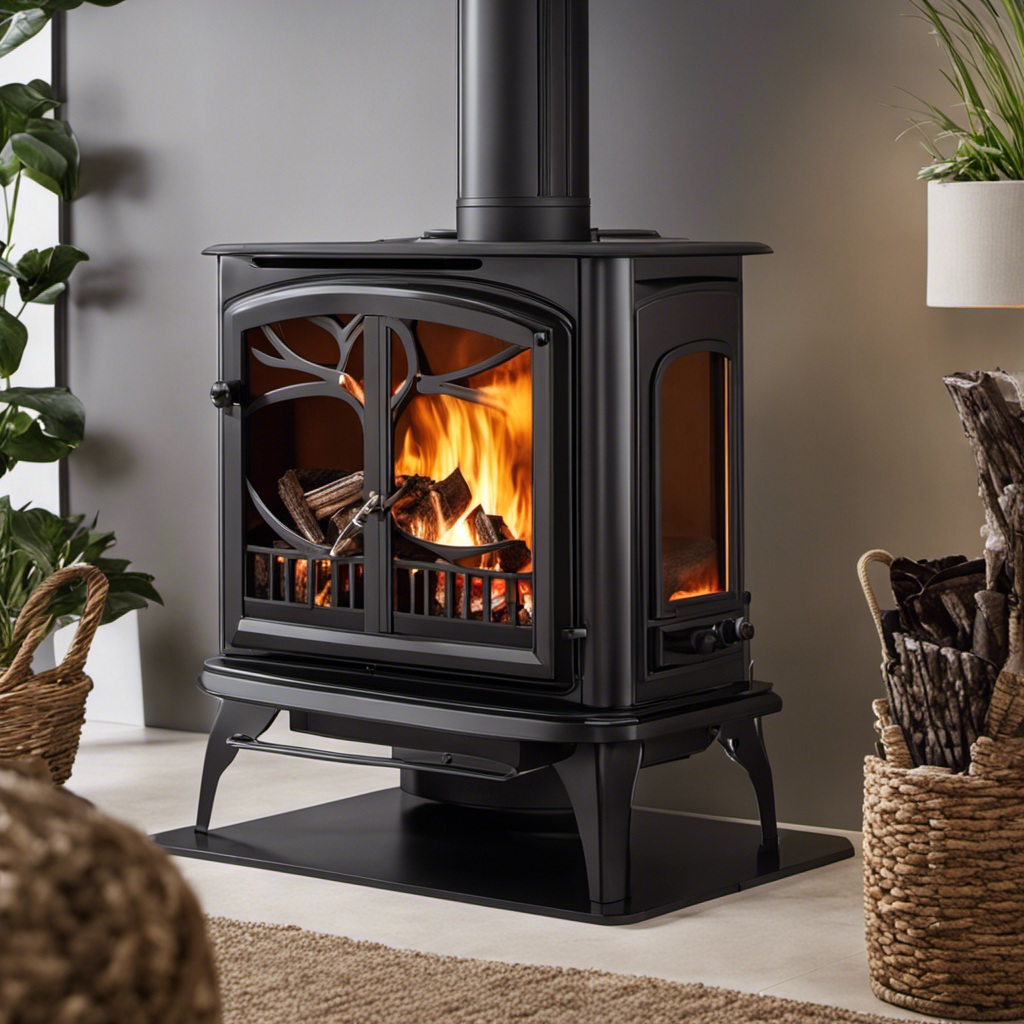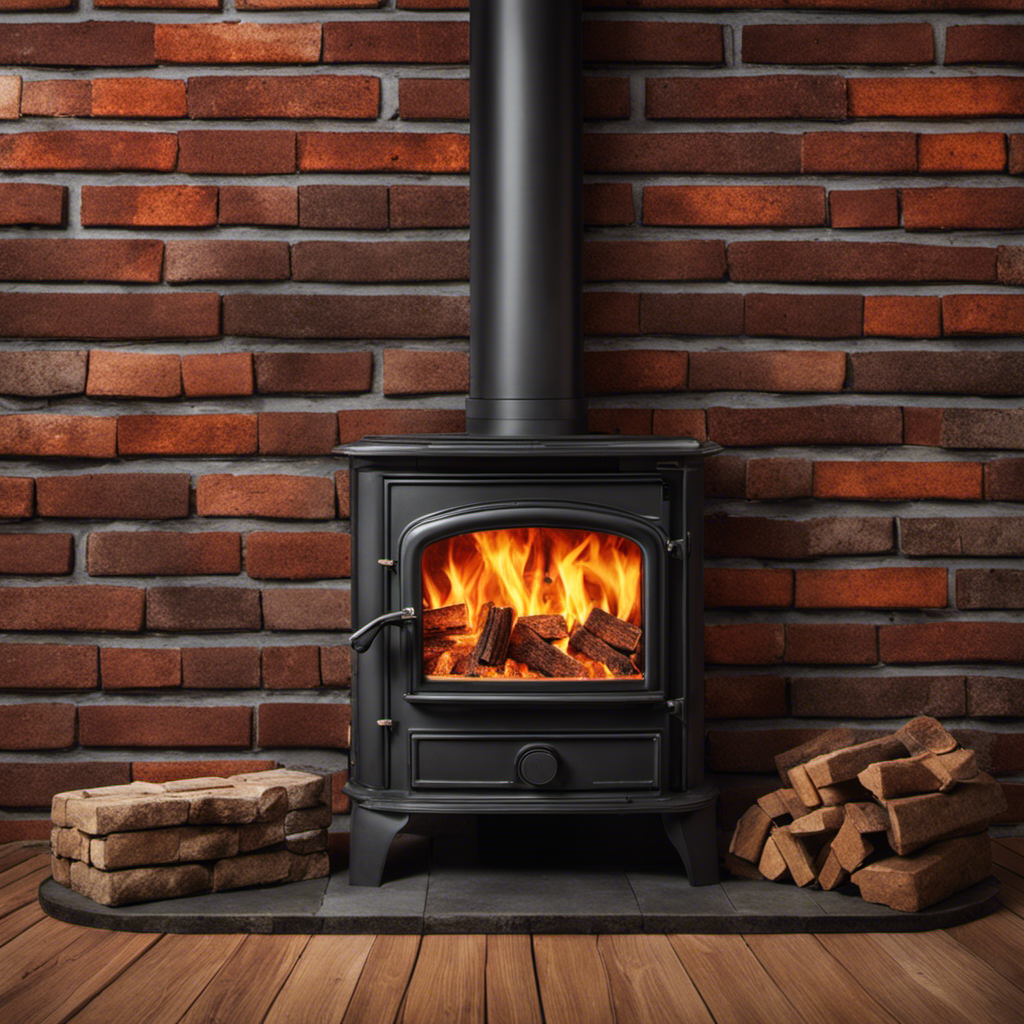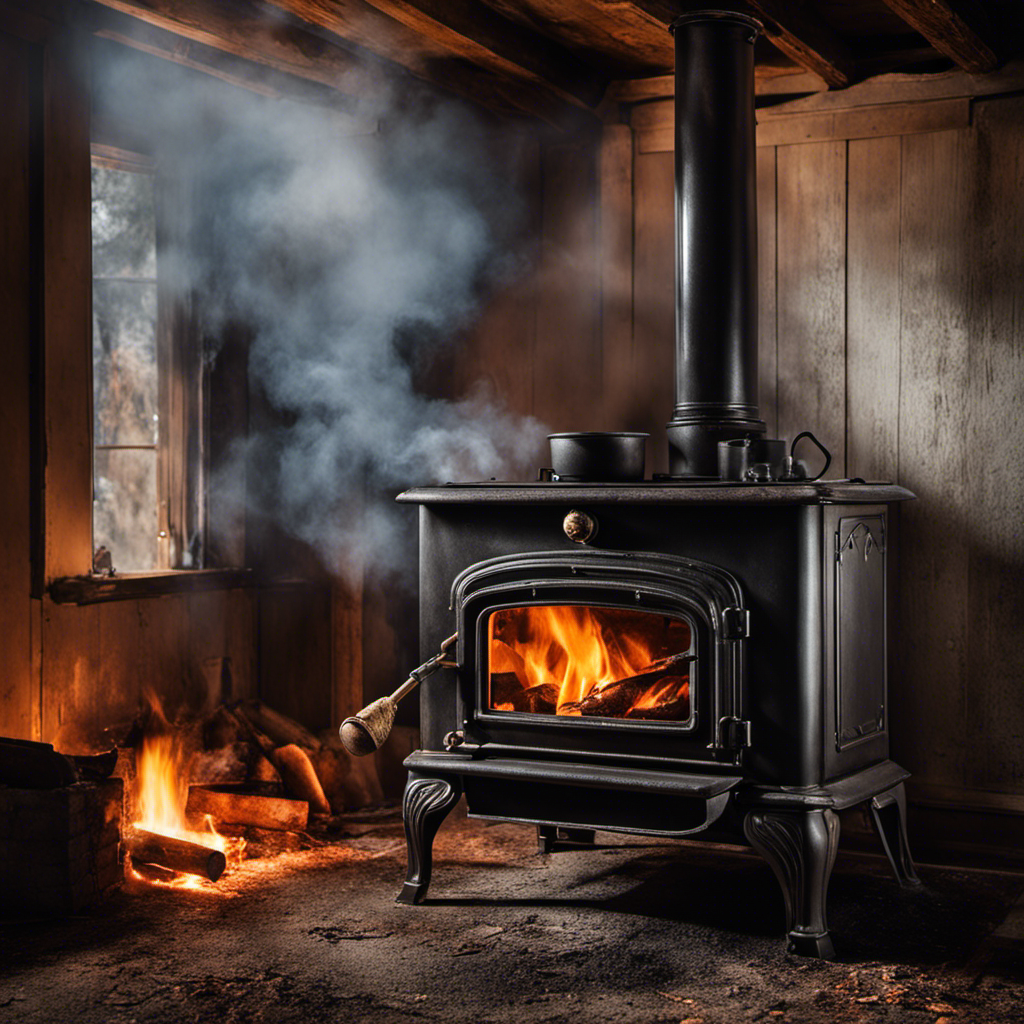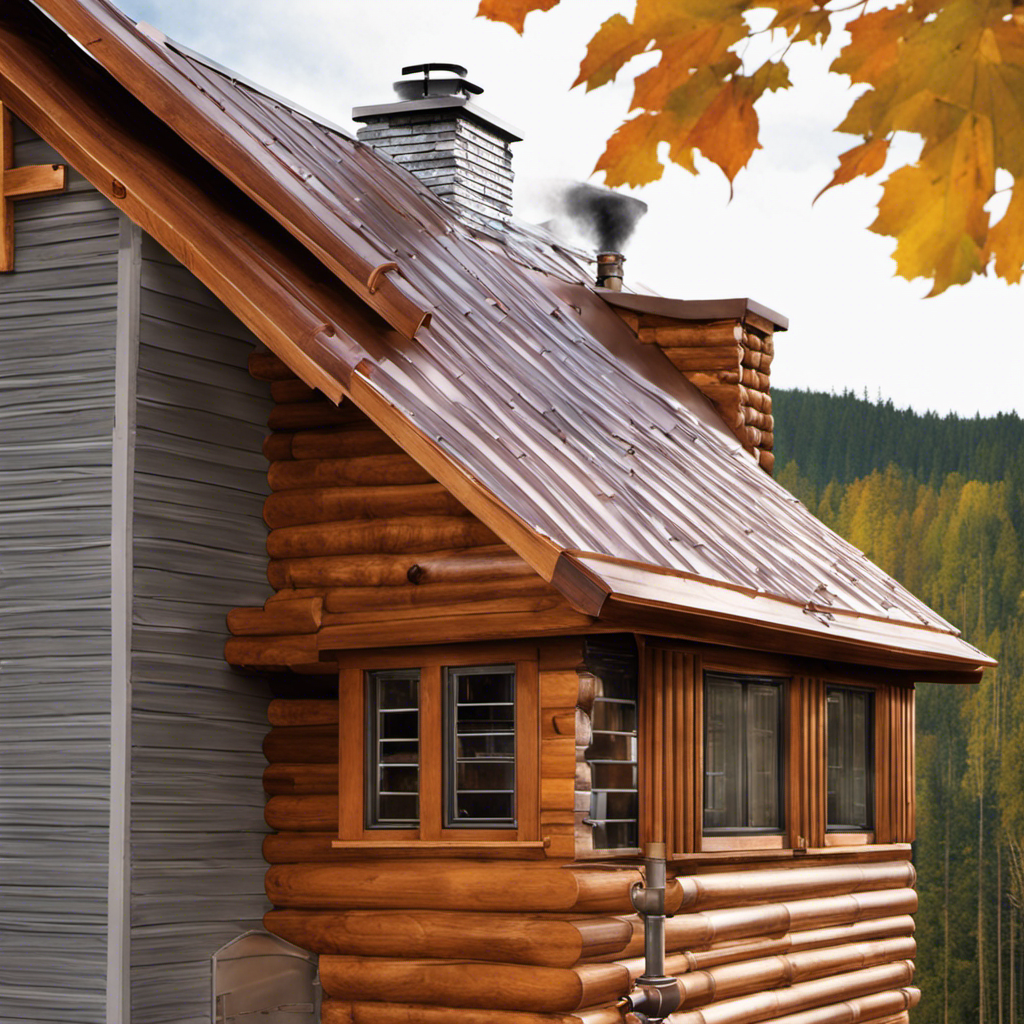I am a homeowner in search of an environmentally friendly and efficient heating solution for my home. I recently discovered the concept of a catalytic wood stove and became interested in its potential benefits. I decided to research the scientific principles behind this technology.
In this article, I will share my findings about what exactly a catalytic wood stove is, how it reduces emissions, and the key features to consider when choosing one. Join me on this journey to discover the wonders of catalytic wood stoves.
Key Takeaways
- Catalytic wood stoves efficiently convert wood into heat.
- The catalytic converter helps in the combustion process, reducing emissions.
- Catalytic wood stoves save money and reduce environmental impact.
- They provide consistent and efficient heat output with longer burn times.
The Science Behind Catalytic Wood Stoves
I’m fascinated by the science behind catalytic wood stoves and how they efficiently convert wood into heat. These stoves have undergone significant advancements in terms of efficiency improvements.
The key to their efficiency lies in the catalytic converter, which is a component that helps in the combustion process. This converter allows for the complete burning of wood, minimizing the amount of unburned particles and gases released into the environment. By increasing the combustion efficiency, catalytic wood stoves reduce fuel consumption and heat loss.
This not only saves money but also reduces the environmental impact of burning wood. The increased efficiency means less wood is needed to produce the same amount of heat, resulting in reduced greenhouse gas emissions and less air pollution.
The science behind catalytic wood stoves truly showcases how innovation can lead to significant environmental benefits.
How Catalytic Wood Stoves Reduce Emissions
I’ve learned that catalytic wood stoves reduce emissions by utilizing a catalytic converter, which helps in the complete burning of wood and minimizes the release of unburned particles and gases into the environment. Here are some key points about the environmental impact, efficiency, and performance of catalytic wood stoves:
-
Environmental impact of catalytic wood stoves:
-
Reduces air pollution by reducing the release of harmful gases and particles.
-
Helps in achieving compliance with environmental regulations.
-
Decreases the carbon footprint by utilizing wood as a renewable energy source.
-
Efficiency and performance of catalytic wood stoves:
-
Provides a consistent and efficient heat output.
-
Maximizes the burning of wood, resulting in less waste and longer burn times.
-
Offers better control over combustion, resulting in improved heat distribution.
With these features, catalytic wood stoves are a great choice for reducing emissions and improving overall heating efficiency.
In the next section, we’ll explore the key features of catalytic wood stoves in more detail.
Key Features of Catalytic Wood Stoves
One key feature of catalytic wood stoves is their ability to provide consistent and efficient heat output. These stoves are designed to maximize energy efficiency and provide eco-friendly heating solutions. The table below highlights the key features of catalytic wood stoves:
| Feature | Description |
|---|---|
| Energy Efficiency | Catalytic wood stoves are highly efficient, converting a large portion of wood fuel into heat, resulting in reduced energy waste. |
| Eco-Friendly Heating | These stoves utilize a catalyst to burn wood at lower temperatures, reducing emissions and promoting cleaner air quality. They are designed to meet stringent environmental regulations. |
| Heat Output | Catalytic wood stoves offer consistent and even heat distribution throughout the space, ensuring comfort and warmth. They have the ability to provide long-lasting heat output, reducing the need for constant refueling. |
Catalytic wood stoves are a reliable and sustainable option for energy-efficient and eco-friendly heating. Their ability to provide consistent heat output, coupled with their high energy efficiency and adherence to environmental standards, make them a popular choice for those seeking long-lasting and environmentally conscious heating solutions.
Benefits of Using a Catalytic Wood Stove
Using a catalytic wood stove can provide numerous benefits, such as increased energy efficiency and reduced emissions.
-
Improved cost efficiency: Catalytic wood stoves are designed to maximize the heat output from burning wood, leading to lower fuel consumption and cost savings in the long run.
-
Environmental impact reduction: These stoves utilize a catalytic converter that helps to burn off harmful pollutants, resulting in reduced emissions and a smaller carbon footprint.
-
Enhanced heat distribution: The advanced technology in catalytic wood stoves ensures a more even and consistent heat distribution throughout your home, keeping you warm and comfortable.
-
Longer burn times: With their efficient combustion process, catalytic wood stoves can burn wood for longer periods, requiring less frequent refueling and maintenance.
-
Versatile design options: Catalytic wood stoves come in various sizes, styles, and finishes, allowing you to choose the perfect one to complement your home decor.
Transitioning into the subsequent section about choosing the right catalytic wood stove for your home, it’s essential to consider factors such as size, heating capacity, and installation requirements.
Choosing the Right Catalytic Wood Stove for Your Home
I frequently research and compare different catalytic wood stoves to find the perfect one for my home. When it comes to choosing the right catalytic wood stove, there are a few important factors to consider.
First, it’s crucial to understand that catalytic wood stoves require regular maintenance to ensure optimal performance. Here are some tips for maintaining a catalytic wood stove: clean the catalyst regularly, inspect the gaskets for any signs of wear or damage, and ensure proper air flow by cleaning the vents and chimney.
Additionally, there are common misconceptions about catalytic wood stoves that should be addressed. One misconception is that they’re difficult to operate, but with proper understanding and maintenance, these stoves can be both efficient and user-friendly. Another misconception is that they produce excessive amounts of smoke, but modern catalytic wood stoves are designed to minimize emissions.
Frequently Asked Questions
How Long Do Catalytic Converters in Wood Stoves Typically Last Before They Need to Be Replaced?
Catalytic converters in wood stoves typically last around 10 years before replacement is needed. Their longevity depends on factors like usage, maintenance, and quality. Regular cleaning and proper operation can extend their lifespan.
Can a Catalytic Wood Stove Be Used as the Primary Heating Source for a Home?
As the primary heating source for a home, catalytic wood stoves are efficient and cost-effective for off-grid living. With an average efficiency of 80%, they can provide consistent warmth while reducing energy consumption and lowering heating costs.
Are There Any Special Maintenance Requirements for Catalytic Wood Stoves?
There are special maintenance requirements for catalytic wood stoves, including regular cleaning procedures. These stoves need to be cleaned and inspected regularly to ensure optimal performance and prevent any potential issues.
Can Catalytic Wood Stoves Be Used in Areas With Strict Emissions Regulations?
Yes, catalytic wood stoves can be used in areas with strict emissions regulations. These stoves have a significant impact on air quality due to their high efficiency in reducing emissions.
Are There Any Safety Concerns or Precautions to Consider When Using a Catalytic Wood Stove?
Safety concerns and precautions must be considered when using a catalytic wood stove. It is important to follow proper installation procedures, regularly clean the stove and chimney, and ensure proper ventilation to prevent carbon monoxide poisoning and fire hazards.
Conclusion
In conclusion, the catalytic wood stove is a highly efficient and environmentally-friendly heating option for any home.
With its advanced technology and ability to reduce emissions, it offers a sustainable solution for keeping your space warm.
Its key features, such as the catalytic converter, ensure optimal combustion and heat output.
By choosing the right catalytic wood stove for your needs, you can enjoy the benefits of lower fuel consumption and cleaner air, making it a truly revolutionary appliance.











